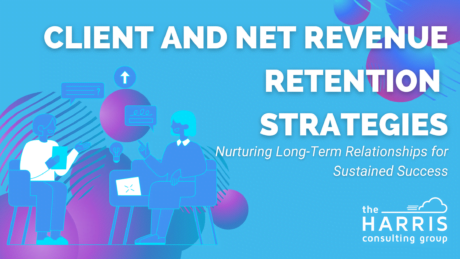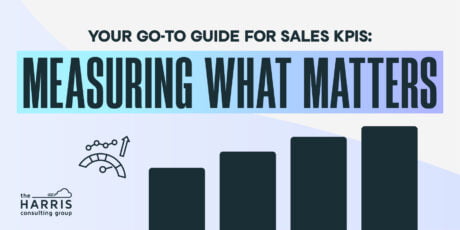In the realm of sales strategy, the foundation lies in a well-structured sales process and an efficient sales cycle. These components serve as the bedrock of any successful go-to-market strategy, regardless of the size or age of your enterprise.
Let’s dig into the best practices for creating a sales process and cycle that can drive your business to unparalleled heights.
Exit Criteria – What makes it all work
To begin, let’s start at the end.
The primary reason for tracking a sales process through stages is to allow everyone the visibility and accuracy to a sales forecast. Every sales process will have stages. The challenge is knowing when to move from one stage to the next.
What are the mini-milestones and conversations that you should confirm in order to leave one stage and go into another. These are called the Exit Criteria.
Exit Criteria clears up ambiguity about the reality of where sales opportunity really is in its life cycle. This helps to determine forecast of the deal as it relates to revenue for the sales rep and the leadership team.
They are specific activities that happen in each stage. It’s important to remember that they are not always in the exact order and may be in one stage but happen sooner. As you review sales stages, try to think about the Exit Criteria you might want to include in your sales process.
You will learn the main exit criteria later on in this article. Now, let’s focus on some practices to create a successful sales process and cycle.
Naming and Staging: Defining Your Sales Journey
The first crucial step in creating an effective sales process is to delineate the stages that a lead progresses through. Here, we introduce the concept of Stage 0, which we believe can encompass two options concurrently:
Stage 0: Suspect
This initial stage is akin to identifying your Ideal Customer Profile (ICP). It often involves gathering information about a company and, in some cases, a specific individual within that organization.
Stage 0: Prospect
Prospects are individuals who you know should be targeted based on their titles and roles within their organization. This stage can even encompass C-level executives, although their involvement may occur at a later juncture.
Sales Stage 1: Qualifying
Separating the Wheat from the Chaff
The Qualifying stage involves all the activities undertaken to ascertain whether a lead is genuinely the right fit. This often includes top-of-the-funnel emails, cold calls, and may also encompass the first crucial meeting. In some instances, a first meeting can seamlessly transition into the Discovery phase.
Sales Stage 2: Discovery:
Driving to Economic Impact
Here is where the rubber meets the road. The discovery stage is all about engaging in a deep-dive conversation with the prospect. It’s perfectly acceptable for a single call to encompass both qualifying and prospecting.
This is the pivotal juncture where product demonstrations often take center stage. It’s worth noting that qualifying calls are typically in charge of SDR/BDRs, while Discovery calls are handled by Account Executives.
Great discovery is when you ask the questions and the prospects respond with their specific use cases and pictures of pain. Then, you go deep to get them to quantify their pain in terms of hours, dollars, and additional costs.
This also includes what projects are delayed based on these numbers, and how the delayed projects affect revenue, company growth. Moreover, for start-ups and founder doing founder led sales, discussing their valuation and the ability to raise the next round of funds.
Sales Stage 3: Selection
Navigating Towards the Shortlist
As the journey progresses, the selection stage comes into play. This is when you begin to move beyond the demo phase. Additional stakeholders are introduced, and discussions around competitors they are looking at and pricing take on a more serious tone.
Here, you start to confirm the approval process, legal requirements, duration estimations, and the key players involved. It’s important to note that some of these discussions can also take place during the Discovery phase.
This is also where discussing the actual timeline of implementation gets serious, and defining the timeline of approval and signature process begins. Remember the approval process is the emotional and actual commitment to a purchase.
The signature process is after the approval process. They often get lumped together and seen as the same. They are very different
Sales Stage 4: Pending
Fine-tuning the Details
The pending stage typically arises when there are intensive discussions regarding pricing and the approval process and finalized. It’s important to remember that if pricing is discussed, but the approval process remains uncertain, nothing is deemed pending.
This is also where procurement may enter the picture. However, when a proposal is on the table, even in a competitive scenario, it shifts into a pending status. Here is where executives want to know if it’s really committed.
They will also want the confirmation of anything that could derail the project from happening as well as the date you can expect a signed document back.
A word to the executives reading: pending means pending. It does not mean “closed won”.
Sales Stage 5: Closed Won
Sealing the Deal
Finally, the culmination of the process leads us to the Closed Won stage. This is the momentous occasion when the signed contract makes its way back to your team, signifying a successful conversion.
Incorporating these best practices into your sales strategy can revolutionize your go-to-market approach. Remember, the key to sustained success lies in periodic audits and adaptations. This will ensure you that your sales process and cycle continue to align with your evolving business goals and customer needs.
Exit Criteria – What makes it all work
Now, let’s go back to the Exit criteria.
As you review the suggested sales stages, its important to think about the Exit Criteria you might want to include in your sales process. Here are some Exit Criteria examples:
Next Steps Confirmed (Every stage should have this)
- 1st Meeting Set
- 1st Meeting Completed
- 2nd Meeting Set
- 2nd Meeting Completed
- Demo Conducted
- Skeptics discussed and addressed
- Decision-making process confirmed
- Legal process confirmed
- Pricing discussed
- Pricing verbally agreed upon
- Proposal sent
Note 1 – And yes, there can be a ton more.
Note 2 – Next Steps Confirmed is often the most overlooked exit criteria. It’s a confirmation that enough of the mini-exit criteria have been done in order to move out to the next state.
So, what did I get wrong?
If you need extra help to boost your sales cycle and process, I invite you to check our 4 Week N.E.A.T. Selling™ Sales Training & Reinforcement Program, where we can help with customer focus.
Or simply book a time to chat here. We’ll help you transform your approach to customer engagement and fuel your journey towards exponential growth.






